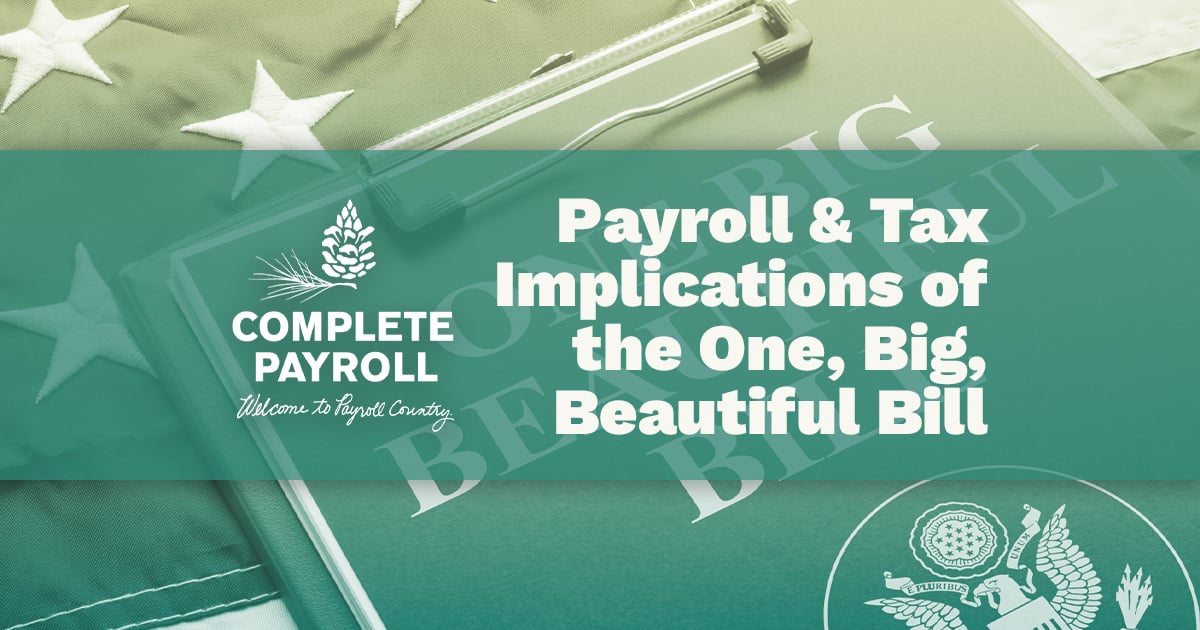What Is A Payroll Deduction? Understanding The Difference Between Mandatory And Voluntary Deductions

Written by Complete Payroll

It’s no secret that payroll has a lot of moving components, and managing and understanding payroll deductions can often be overwhelming at first. Payroll deductions are wages withheld from an employee’s paycheck to pay taxes, benefits, garnishments, insurance premiums, union dues, or retirement contributions.
Employers are responsible for ensuring that the correct amount gets taken out of employees wages in order to follow federal and state laws and regulations regarding payroll deductions. Understanding payroll deductions is crucial for employers and payroll professionals, as they can get in trouble with the IRS if the correct amount isn’t withheld from a paycheck.
In addition to understanding payroll deductions, employers must understand the different types of payroll deductions: mandatory and voluntary. In addition to this, some deductions are made pre-tax while others are taken out post-tax. It’s important for employers and payroll professionals to understand the details of each of these components to ensure an accurate, compliant payroll.
What are the Different Types of Payroll Deductions?
As mentioned above, there are two main types of payroll deductions: mandatory and voluntary. The difference between these two is that mandatory deductions, as the name implies, are deductions that an employer is legally required to take out of an employee’s wages. Voluntary deductions are deductions that the employee chooses to take out of their wages.
Mandatory Payroll Deductions
It’s important for employers to be aware of what falls under mandatory payroll deductions so they can ensure an accurate payroll and be in compliance with the IRS. These are the deductions that employers legally have to withhold from an employee’s paycheck, and failing to do so can cause issues for employers. In fact, if the IRS determines that an employer purposely neglected to pay employment taxes, they could not only face fines and even imprisonment for up to five years.
Voluntary Payroll Deductions
Voluntary deductions are just that—voluntary from an employee. These voluntary deductions go to contributions that typically enhance employee satisfaction by either setting themselves up in the future or giving them security in the present. For example, voluntary deductions typically include benefits such as insurance opportunities or retirement plans.
What are Mandatory Payroll Deductions?
Mandatory payroll deductions are deductions that are legally required for employers to withhold from an employee's paycheck. These amounts go to support taxes and government-funded programs.
Mandatory payroll deductions include:
- Federal Income Taxes: Wages, including salaries, commissions, tips, bonuses, gambling winnings, and unemployment benefits, are all types of income that are subject to federal taxes. The amount of taxes due on these earnings depends on which tax bracket the employee falls under.
- State and Local Income Taxes: State income tax varies depending on the state the worker resides in, not which state their place of employment is based out of. Additionally, the amount of state and local taxes due depends on how much income is earned. Employers should carefully review their state and local income tax laws; as of 2024, only 41 states collect state income tax.
- Social Security: The Social Security tax rate is 6.2% of gross earnings and has a wage base limit, meaning employers only withhold Social Security taxes from an employee’s earnings until they earn over the wage base. The Social Security wage base generally changes every year, with the 2024 wage base being $168,600. This means if an employee's earnings go above this amount, they are not subject to Social Security tax withholdings.
- Medicare: Both Social Security and Medicare taxes fall under the Federal Income Contributions Act (FICA) and are mandatory deductions. Employees need to pay a Medicare tax rate of 1.45% on earnings without a wage base. Workers are subject to this tax rate regardless of how much they earn each year.
What are Voluntary Payroll Deductions?
Voluntary payroll deductions are every deduction that is not required by law for an employer to withhold, in other words, anything that is not a tax requirement or for a government program. It’s important to note that participation in these benefit programs may require the employee to submit written authorization for these voluntary payroll deductions. This serves to help protect the employer if the employee ever decides to dispute these deductions.
The order in which an employer takes out payroll deductions greatly matters. For example, voluntary payroll deductions should be taken out after all mandatory payroll deductions have been withheld.
Voluntary deduction programs chosen by an employee may include:
- Insurance Premiums: Insurance premiums may include disability, health, dental, life, vision, or Health Savings Account (HSA) contributions. If an employer offers these, then an employee can choose to enroll in any of these benefits with voluntary deductions.
- Retirement Plan Contributions: Retirement contributions may include either IRAs or a 401(k) retirement plan. Some employers may match employee contributions, but employees choose the amount of retirement voluntary deduction per paycheck.
- Union Dues: While not applicable to every employee, some employees who are in a union may have to pay union dues and voluntarily choose to have these dues taken out as a payroll deduction.
How to Determine Deduction Amounts
At this point, you know that employers are legally responsible for withholding mandatory deductions from a paycheck, but how do you determine the withholding amount?
The amount of taxes withheld for each employee will depend on a few key things. Firstly, how they filled out their W-4 form will impact the tax amount deducted from an employee’s paycheck. This doesn’t mean they may be able to pay less in taxes; it means that the more accurately an employee fills out their W-4, the less they will owe when they file their annual income taxes.
Secondly, the state and local taxes that the employee is located in make a difference. As mentioned before, the state income tax rate varies for each state. Some states have a high top tax rate of over 10%, while certain other states have a state income tax rate of 0%. Make sure to look into your state and local tax laws and regulations to ensure you are processing payroll correctly.
Thirdly, if your employee has enrolled in benefits, make sure you get their voluntary deduction authorization request in writing so you know exactly how much to withhold from their earnings to support these benefits.
And lastly, employers must be aware of any court-ordered garnishment that they need to comply with.
Wage Garnishments
Wage garnishment is a legal process in which the employer must withhold a portion of an employee’s earnings to fulfill either a court order or official notice. For example, an employee may have a court order to pay child support. In this case, wage garnishments fall under the mandatory deduction category, and the employer must collect these funds from the employee’s wages before any voluntary deductions are able to be made.
Wage garnishment may include:
- Child support
- Consumer debt
- Alimony
- Bankruptcy
- Student loans
- IRS tax levies
Summary
Understanding payroll deductions is important for accurately processing payroll; one of the key things to understand is that payroll deductions are categorized into mandatory and voluntary types. Correctly withholding mandatory deductions, such as federal, state, and local laws, will help employers adhere to legal requirements. Voluntary deductions are an employee’s choice to enroll in certain benefit programs and are taken out only after the mandatory deductions are withheld.
It’s important to note that taxes and wage garnishments are mandatory, and employers who fail to accurately withhold these deductions may be liable for the missing amounts. In fact, failure to withhold these correctly can lead to significant penalties, including fines or imprisonment.
It’s essential that employers ensure an accurate and compliant payroll—and processing with Complete Payroll can help simplify that responsibility. Learn more about our comprehensive payroll solutions here!















 Get Instant Blog Notifications
Get Instant Blog Notifications


